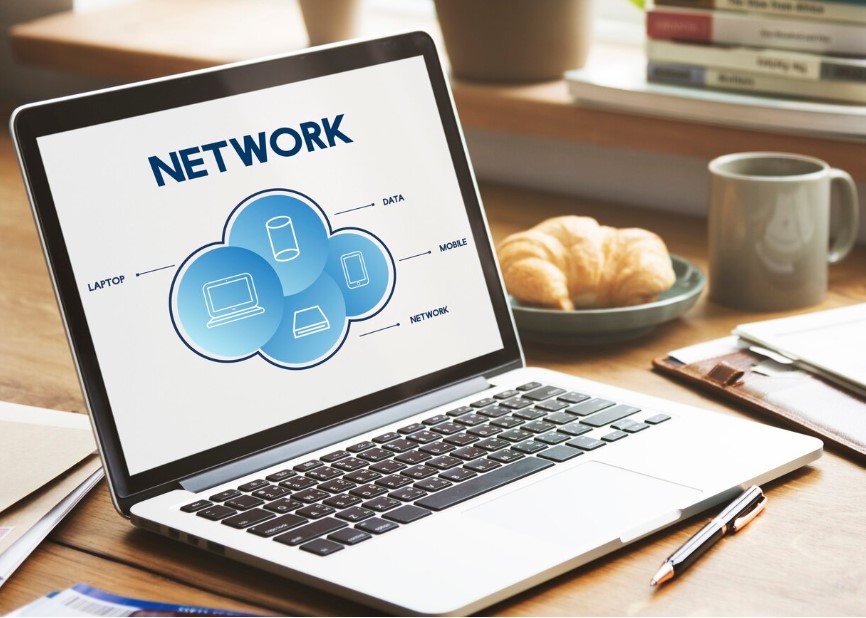

IT Network Disaster Recovery Plan: Disasters can strike when least expected, wreaking havoc on businesses and their operations. In the digital age, where dependence on IT networks is paramount, having a robust IT Network Disaster Recovery Plan is not just a precautionary measure but a strategic necessity. Let’s delve into the key aspects of crafting and implementing an effective IT Network Disaster Recovery Plan that ensures business continuity in the face of adversity.
What is an IT Network Disaster Recovery Plan?
An IT Network Disaster Recovery Plan (IT NDRP) is a comprehensive strategy designed to ensure the resilience and recovery of an organisation’s information technology (IT) network in the event of a disaster or significant disruption. The primary goal of the plan is to minimise downtime, data loss, and service interruptions, allowing the organisation to resume normal operations as quickly and efficiently as possible.
Importance of Having a Robust IT Network Disaster Recovery Plan
In a world where businesses rely heavily on digital processes, the absence of a robust recovery plan can lead to catastrophic consequences. From financial losses to damage to reputation, the fallout from inadequate disaster preparedness can be severe. Therefore, having a well-thought-out IT Network Disaster Recovery Plan is crucial for mitigating risks and ensuring business resilience.
Key Components of an IT Network Disaster Recovery Plan
Data Backup and Recovery
One of the foundational pillars of a robust recovery plan is a systematic approach to data backup and recovery. Regularly backing up critical data ensures that even in the face of a disaster, essential information can be swiftly recovered, minimizing data loss.
Redundancy and Failover Systems
Building redundancy and failover systems into the IT infrastructure provides a safety net during disruptions. This involves having backup servers, network connections, and power sources ready to seamlessly take over in case of primary system failures.
Communication and Notification Protocols
Effective communication is paramount during a crisis. Establishing clear communication and notification protocols ensures that all stakeholders are informed promptly, enabling a coordinated response to the disaster.
Assessing Risks and Vulnerabilities
Identifying Potential Threats to the IT Network
Understanding the specific threats that could impact the IT network is essential for crafting a targeted recovery plan. Whether it’s natural disasters, cyberattacks, or human error, a thorough risk assessment helps identify vulnerabilities.
Conducting a Risk Assessment
A risk assessment involves evaluating the likelihood and potential impact of various threats. This process allows businesses to prioritize risks and allocate resources effectively to address the most critical vulnerabilities.
Creating a Comprehensive IT Network Disaster Recovery Strategy

Developing a Step-by-Step Recovery Plan
Crafting a step-by-step recovery plan ensures a systematic response to disasters. This includes delineating responsibilities, establishing a chain of command, and outlining specific actions to be taken at each stage of the recovery process.
Involving Key Stakeholders in the Planning Process
Inclusion of key stakeholders, including IT personnel, management, and relevant departments, ensures that the recovery plan aligns with the overall business objectives. Their insights contribute to a more comprehensive and effective strategy.
Testing and Training
Importance of Regular Testing
A recovery plan is only as good as its execution. Regularly testing the plan helps identify potential shortcomings and allows for adjustments before a real disaster occurs.
Training Employees on Disaster Response Procedures
Ensuring that employees are well-versed in disaster response procedures is critical for a swift and coordinated recovery. Conducting training sessions and drills prepares staff for emergencies and reduces response time.
Selecting the Right Technologies
Utilizing Cutting-Edge Technologies for Recovery
Advancements in technology offer innovative solutions for disaster recovery. From automated backup systems to artificial intelligence-driven threat detection, leveraging cutting-edge technologies enhances the effectiveness of a recovery plan.
Cloud-Based Solutions and Their Role in Disaster Recovery
The cloud provides a secure and scalable platform for data storage and recovery. Integrating cloud-based solutions into the recovery plan ensures data accessibility and redundancy, even in the face of physical infrastructure damage.
Implementing Security Measures
Cybersecurity in Disaster Recovery
Disasters often provide opportunities for cybercriminals. Integrating robust cybersecurity measures into the recovery plan protects sensitive data from exploitation during and after a disaster.
Protecting Sensitive Data During and After a Disaster
As recovery efforts unfold, safeguarding sensitive data remains a priority. Encryption, access controls, and secure communication channels contribute to maintaining data integrity and confidentiality.
Case Studies: Successful IT Network Disaster Recoveries
Real-World Examples of Companies Bouncing Back from Disasters
Examining case studies of businesses that successfully recovered from IT disasters provides valuable insights. These stories illustrate the importance of preparation, rapid response, and adaptive strategies.
Lessons Learned from These Cases
Analyzing the lessons learned from real-world cases helps businesses refine their own recovery plans. Identifying common challenges and effective solutions enhances the overall resilience of the IT network.
Common Mistakes to Avoid

Overlooking Specific Vulnerabilities
One common pitfall is overlooking specific vulnerabilities unique to the organization. Conducting a thorough risk assessment and staying vigilant to emerging threats is essential.
Failing to Update the Recovery Plan Regularly
An outdated recovery plan may prove ineffective when faced with evolving threats. Regular updates, considering changes in technology and business operations, are crucial for maintaining relevance.
Legal and Compliance Considerations
Ensuring Compliance with Industry Regulations
Many industries have specific regulations regarding data protection and disaster recovery. Ensuring compliance not only avoids legal complications but also enhances overall security measures.
Legal Implications of Not Having a Proper IT Network Disaster Recovery Plan
The absence of a proper recovery plan can lead to legal ramifications, especially if sensitive customer data is compromised. Understanding and adhering to legal requirements is imperative.
Cost-Effective Disaster Recovery Solutions
Balancing Cost and Effectiveness in Disaster Recovery Planning
Creating a cost-effective recovery plan involves finding a balance between budget constraints and the need for robust solutions. Prioritizing critical components ensures a focused and efficient approach.
Affordable Technologies for Small and Medium-Sized Businesses
Smaller businesses often face resource constraints. Identifying affordable technologies tailored to the scale of operations ensures that even modest budgets can support effective disaster recovery.
Future Trends in IT Network Disaster Recovery
Evolving Technologies and Their Impact
The landscape of IT network disaster recovery is continually evolving. Anticipating future trends, such as advancements in AI, automation, and decentralized systems, allows businesses to stay ahead in their preparedness efforts.
Predictions for the Future of Disaster Recovery Planning
Experts predict increased integration of AI, machine learning, and predictive analytics into disaster recovery strategies. Proactive planning and staying abreast of technological advancements will be key for future readiness.
Benefits Beyond Recovery
Building Resilience and Adaptability
A well-crafted recovery plan not only ensures business continuity but also builds resilience. Adaptable organizations can navigate disruptions more effectively, emerging stronger in the aftermath.
Gaining a Competitive Edge Through a Solid Disaster Recovery Plan
In an increasingly competitive business landscape, a robust disaster recovery plan can be a differentiator. Customers and partners value organizations that prioritize security and demonstrate preparedness.
Challenges in Implementing IT Network Disaster Recovery Plans
Overcoming Resistance to Change
Implementing a recovery plan may face resistance from employees accustomed to existing processes. Clear communication and demonstrating the benefits of the plan are essential in overcoming this challenge.
Addressing Resource Constraints
Smaller businesses or those with limited resources may find it challenging to allocate funds to disaster recovery. Exploring cost-effective solutions and seeking government incentives can alleviate this constraint.
In conclusion, an IT Network Disaster Recovery Plan is not just a contingency measure but a strategic investment in the longevity of a business. By addressing risks, embracing technological advancements, and learning from real-world cases, organizations can build a resilient digital infrastructure that stands the test of unforeseen challenges.
Frequently Asked Questions (FAQs)
How often should an IT Network Disaster Recovery Plan be tested?
A: Regular testing, at least annually, is recommended to ensure the plan’s effectiveness and identify areas for improvement.
What role does cybersecurity play in disaster recovery?
A: Cybersecurity is crucial in preventing data exploitation during and after a disaster, safeguarding sensitive information.
Are there government incentives for small businesses implementing disaster recovery plans?
A: Some governments offer incentives or grants to encourage small businesses to invest in disaster recovery measures.
How can businesses balance cost and effectiveness in disaster recovery planning?
A: Prioritizing critical components, exploring affordable technologies, and seeking tailored solutions help balance cost-effectiveness.
What are the legal implications of not having a proper disaster recovery plan?
A: Not having a proper recovery plan may lead to legal consequences, especially if customer data is compromised, violating data protection regulations
Find Related Blogs
- A Comprehensive Network Disaster Recovery Plan Sample.
- Mastering Disaster Recovery and Business Continuity: A Comprehensive Guide.
- Download 11 Free Network Disaster Recovery Plan Template Now.
- Network Disaster Recovery Plan Example: Safeguarding Connectivity in Times of Crisis.
- Crafting a Robust Network Disaster Recovery Plan.
Stay connected with EXCEED ICT
Stay connected with EXCEED ICT by joining our social networks (given at footer). Get the latest updates, news, and tips for enterprise device deployment. Follow us on Twitter, Facebook, and LinkedIn for the best enterprise device deployment solutions.
Help us to improve our enterprise by rating us on Google Maps. Your feedback and comments are valuable to us and will be used to make our services even better.


